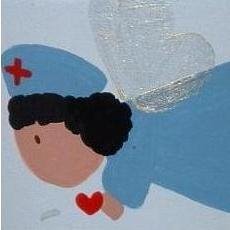Cardiogenic Shock: heart is unable to meet the demands of the body. This can be caused by conduction system failure or heart muscle dysfunction.
Aortic insufficiency: Heart valve disease that prevents the aortic valve from closing completely. Backflow of blood into the left ventricle.
Aortic aneurysm: Expansion of the blood vessel wall often identified in the thoracic region.
Hypovolemic shock: Poor blood volume prevents the heart from pumping enough blood to the body.
Cardiogenic shock: Enough blood is available, however the heart is unable to move the blood in an effective manner.
Myocarditis: inflammation of the heart muscle.
Heart valve infection: endocarditis (inflammation), probable valvular heart disease. Can be caused by fungi or bacteria.
Pericarditis: Inflammation of the pericardium.
Arrhythmias: Irregular heart beats and rhythms disorder
Arteriosclerosis: hardening of the arteries.
Cardiomyopathy: poor heart pumping and weakness of the myocardium. As greater amounts of blood fill and remain in the heart's lower chambers (ventricles), the ventricles expand. In time, the heart muscle stretches out of shape (dilates) and becomes even weaker
Types:
Alcoholic cardiomyopathy - due to alcohol consumption
Dilated cardiomyopathy - left ventricle enlargement
Hypertrophic cardiomyopathy - abnormal growth left ventricle
Ischemic cardiomyopathy - weakness of the myocardium due to heart attacks.
Peripartum cardiomyopathy - found in late pregnancy
Restrictive cardiomyopathy - limited filling of the heart due to inability to relax heart tissue.
Congestive Heart Failure:
Class I describes a patient who is not limited with normal physical activity by symptoms.
Class II occurs when ordinary physical activity results in fatigue, dyspnea, or other symptoms.
Class III is characterized by a marked limitation in normal physical activity.
Class IV is defined by symptoms at rest or with any physical activity.
Heart Sounds:
S1- tricuspid and mitral valve close
S2- pulmonary and aortic valve close
S3- ventricular filling complete
S4- elevated atrial pressure (atrial kick)
Wave Review
ST segment: ventricles depolarized
P wave: atrial depolarization
PR segment: AV node conduction
QRS complex: ventricular depolarization
U wave: hypokalemia creates a U wave
T wave: ventricular repolarization
Wave Review Indepth:
1. P WAVE - small upward wave; indicates atrial depolarization
2. QRS COMPLEX - initial downward deflection followed by large upright wave followed by small downward wave; represents ventricular depolarization; masks atrial repolarization; enlarged R portion - enlarged ventricles; enlarged Q portion - probable heart attack.
3. T WAVE - dome shaped wave; indicates ventricular repolarization; flat when insufficient oxygen; elevated with increased K levels
4. P - R INTERVAL - interval from beginning of P wave to R wave; represents conduction time from initial atrial excitation to initial ventricular excitation; good diagnostic tool; normally <>.
5. S-T SEGMENT - time from end of S to beginning to T wave; represents time between end of spreading impulse through ventricles and ventricular repolarization; elevated with heart attack; depressed when insufficient oxygen.
6. Q-T INTERVAL - time for singular depolarization and repolarization of the ventricles. Conduction problems, myocardial damage or congenital heart defects can prolong this.
Arrhythmias Review
Supraventricular Tachyarrhythmias
Atrial fibrillation – Abnormal QRS rhythm and poor P wave appearance. (>300bpm.)
Sinus Tachycardia - Elevated ventricular rhythum/rate.
Paroxysmal atrial tachycardia - Abnormal P wave, Normal QRS complex
Atrial flutter - Irregular P Wave development. (250-350 bpm.)
Paroxysmal supraventricular tachycardia- Elevated bpm (160-250)
Multifocal atrial tachycardia - bpm (>105). Various P wave appearances.
Ventricular Tachyarrhythmias
Ventricular Tachycardia - Presence of 3 or greater PVC’s (150-200bpm), possible abrupt onset. Possibly due to an ischemic ventricle. No P waves present.
(PVC)- Premature Ventricular Contraction - In many cases no P wave followed by a large QRS complex that is premature, followed by a compensatory pause.
Ventricular fibrillation - Completely abnormal ventricular rate and rhythm requiring emergency innervention. No effective cardiac output.
Bradyarrhythmias
AV block (primary, secondary (I,II) Tertiary
Primary - >.02 PR interval
Secondary (Mobitz I) – PR interval Increase
Secondary (Mobitz II) – PR interval (no change)
Tertiary - most severe, No signal between ventricles and atria noted on ECG. Probable use of Atrophine indicated. Pacemaker required.
Right Bundle Branch Block (RBBB)/Left Bundle Branch Block (LBBB)
Sinus Bradycardia - <60>
Cardiac Failure Review
A. Right Upper Quadrant Pain
B. Right Ventricular heave
C. Tricuspid Murmur
D. Weight gain
E. Nausea
F. Elevated Right Atrial pressure
G. Elevated Central Venous pressure
H. Peripheral edema
I. Ascites
J. Anorexia
K. Hepatomegaly
Left Sided Heart Failure
A. Left Ventricular Heave
B. Confusion
C. Paroxysmal noturnal dyspnea
D. DOE
E. Fatigue
F. S3 gallop
G. Crackles
H. Tachycardia
I. Cough
J. Mitral Murmur
K. Diaphoresis
L. Orthopnea
ECG Changes with MI
T Wave inversion
ST Segment Elevation
Abnormal Q waves
ECG Changes with Digitalis
Inverts T wave
QT segment shorter
ECG Changes with MI
T Wave inversion
ST Segment Elevation
Abnormal Q waves
ECG Changes with Digitalis
Inverts T wave
QT segment shorter
ECG Changes with Potassium
Hyperkalemia- Lowers P wave, Increases width of QRS complex
Hypokalemia- Lowers T wave, causes a U wave
ECG Changes with Calcium
Hypercalcemia-Makes a longer QRS segment
Hypocalcemia- Increases time of QT interval










0 comments:
Post a Comment